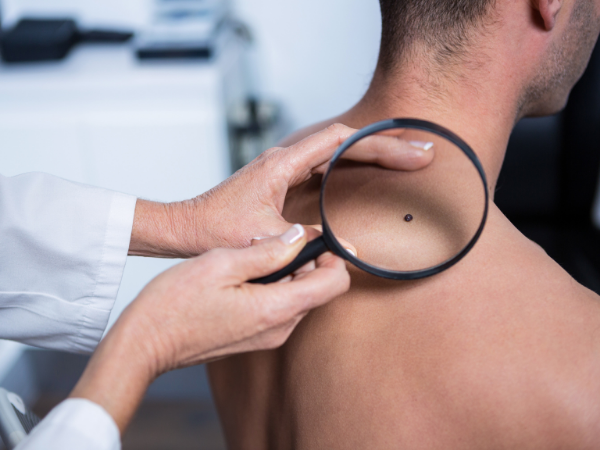What a dermatologist wants you to know about skin cancer

Despite public health campaigns and medical advancements, cancer de la peau remains one of the most common cancers in the United States, and rates are rising. The good news: Most skin cancers are treatable, especially in early stages. As a board-certified dermatologist, I want you to know your skin, perform at-home skin checks monthly and recognize concerning lesions.
Three most common skin cancers
You may be familiar with the terms basal cell carcinoma, squamous cell carcinoma and melanoma. They are three most common types of skin cancer, and their names refer to the type of skin cell in which the cancer originates.
Basal cell carcinoma: This is most common type of skin cancer. It originates in the lower part of the epidermis — or the outermost layer of the skin — called the basal cell layer. Basal cell carcinoma often appears as a small, smooth, pearly bump that may be red or pink. It can also appear as an irritated patch of skin or a sore or scab that won’t heal. The area may bleed.
I have many male patients who thought they nicked themselves while shaving but realized over the course of months that the area never healed. Other patients have come to me thinking they had a pimple, only to learn it was basal cell skin cancer.
LIRE AUSSI | What it’s like to find—and remove—basal cell carcinoma
Squamous cell carcinoma: The second most common skin cancer, squamous cell carcinoma, originates in the squamous cell layer of the skin, which is the thickest layer of the epidermis. Squamous cell carcinoma usually appears as a firm, pinkish bump, a sore that doesn’t heal, or a scaly, red patch of skin that does not go away.
Melanoma: Melanoma develops in the melanocytes, the cells that give the skin its color. Melanoma is one of the most serious types of skin cancer because it is more likely to metastasize (spread). Melanomas usually are hyperpigmented, which means they appear brown or black. When we examine a mole, we look to see if the spot is exhibiting the ABCDEs:
UNsymmetry: If the spot has an irregular shape, get checked.
Border: If the spot has irregular or scalloped borders, get checked. Most normal moles have smooth, round borders.
Color: Most normal moles have one color. If the spot also contains black, pink or is multicolored, get checked.
Diameter: Normal moles are often 6mm or less, which is about the size of a pencil eraser. Is it bigger? If yes, get checked.
Evolution: Is the mole changing in appearance? Is it growing? Are the borders or color changing? Is it bleeding? If yes to any of these, get checked.
LIRE AUSSI | Understanding skin cancer in darker tones
Checking for skin cancer
Skin cancer is most likely to develop on sun-exposed areas of the body—like your face, the top of your head, or your neck, ears or arms—but can develop anywhere. That is why I encourage everyone to know your skin and perform at-home monthly skin checks.
You can do a skin check after showering. Stand in front of a full-length mirror, if possible, and look at your skin for anything that doesn’t look right. Be sure to inspect the bottoms of your feet, between your toes, the backs of your legs, your fingers and palms, and your nails. If you notice a spot that is changing in color, size or shape, one that is bleeding or one that looks different from the other spots you have, reach out to a board-certified dermatologist.
Talk to your dermatologist to help assess your skin cancer risk and come up with a screening plan that is right for you. Factors that increase your risk for skin cancer include a strong family history of melanoma, multiple atypical moles, frequent sunburns and/or indoor tanning bed use.
Consider asking for help from your partner, ob-gyn, massage therapist, acupuncturist or hairdresser. These are people who may be able to spot lesions in those hard-to-see places and can alert you if they see something concerning.
Preventing skin cancer
- You may not always be able to prevent skin cancer, but I want to share a few ways you can lower your risk:
- Wear broad-spectrum sunscreen with an SPF of 30 or higher and reapply every two hours or after going swimming. Wear sunscreen ear-round, not just in summer!
- Limit sun exposure during peak hours, usually between 10 a.m. – 4 p.m., when the sun’s rays are strongest.
- Wear sun-protective clothing, such as wide-brim hats and rash guards.
Fortunately, skin cancer —even melanoma— is very treatable when detected in early stages. If you see something concerning, don’t hesitate to go to the doctor and check your health.

Jamie Goldberg, M.D., is a board-certified dermatologist with the Mid-Atlantic Permanente Medical Group. She sees patients at the Kaiser Permanente South Baltimore County Medical Center.